This post is sponsored by The National Milk Life Campaign
Last week I drove about an hour into the Virginia countryside to Grazeland. Not the home of a mooing Elvis, but the farm of about 200 dairy cows who provide milk to Organic Valley. I was hosted by Gerry, a regional rep for Organic Valley, and Phillip and Terry, who own and operate the farm.
The farm is right outside of Dayton, Virginia, which is a bit of a hub for dairy farms in the Shenandoah Valley.
If I look cold, I WAS! It was a blustery day, and snow flakes drifted down around us as we toured the property. My toes were completely numb!
I was curious to know all about dairy farming, and this was my first visit to one. I asked a million questions about the process – from calving to nutrition to pasture feeding. I call this my listening face!!
One of my first questions was whether or not the cows were pasture fed 100% of the time. As you might suspect, climates like Virginia’s can’t support year round fresh grass, so farms feed the cows a mixture of hay and a preserved version of the grass they cut down in the summertime. Think of it as humans planting gardens in the summer and pickling veggies to eat in the dead of winter. Phil said the cows love the fresh grass the most (just like we love summer greens and tomatoes off the vine!) but that the hay is the next best thing in the winter time.
We also discussed the calving process, since cows obviously have to have a baby to lactate. They can continue to be milked while they are pregnant until the last few months when they are given a “dry period” to help their bodies focus on growing the baby. Calves were being born the day we were there, but sadly I didn’t get to see one for myself. This little girl was just a day old!
In terms of treatment, I found the farm to be the kind of place I’d want to live if I were a cow. In the summertime, they have a pretty cool “air conditioning” system comprised of fans and misty water – kind of like those fun misters you walk through at theme parks! And in the winter, Terry told me that once it was pretty cold and they went to a thrift store and bought a bunch of wool coats and sweaters to put on the smaller calves. They were all in bright colors and it looked like a cow fashion show!
Hanging out with the teenagers –
The pasture was huge, and there was grass as far as the eye could see. The farm uses a neat portable irrigation system and lots of natural cow fertilizer 🙂 Since it’s an organic farm, you won’t find any synthetic pesticides anywhere.
We went up to the farmhouse to enjoy some tea and snacks and to warm up before going down to see the milking. We had hot green mint tea, homemade ginger cookies and organic milk and cheese sticks to eat!
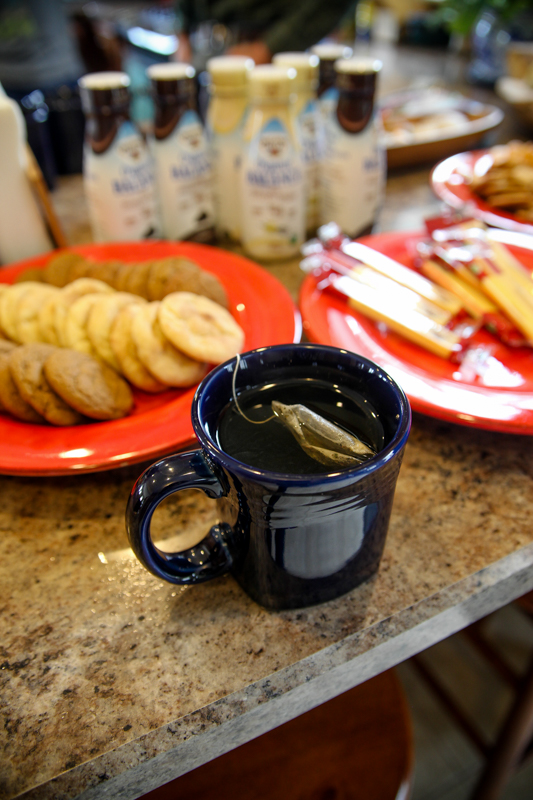
I LOVED on that fire!
After we were warm and full, we drove back to the dairy to see the cows come in for milking. As herd animals, it was cute to see them all walk in together and line up. They knew just what to do!
I put my finger in their pump and it gently sucked and squeezed at the same time –
I asked Phil if they seemed to like coming to milking (something only someone around cows all day might notice) and he said for sure. Chewing their cud means cows are happy, these ladies were just a’chewin’ away!
I asked Phil if he were a cow would he like to be on his farm, and he pointed out that his cows have every need taken care of – shelter, plenty of food, climate control, medical care…. and love : ) He does have a good point!
I took in a lot of knowledge on the trip, so I’ll do my best to answer any other questions you might have.
Thanks to The National Milk Life Campaign for the opportunity and for sponsoring this post!


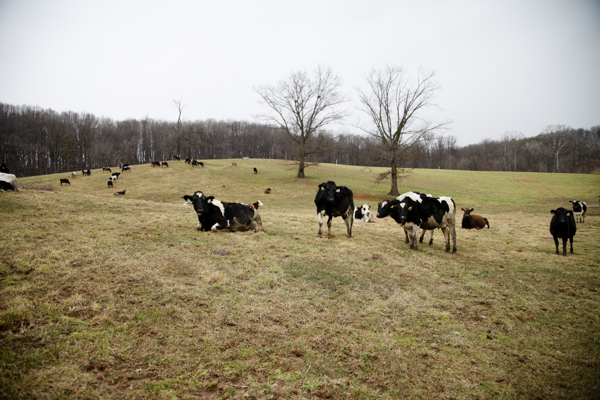
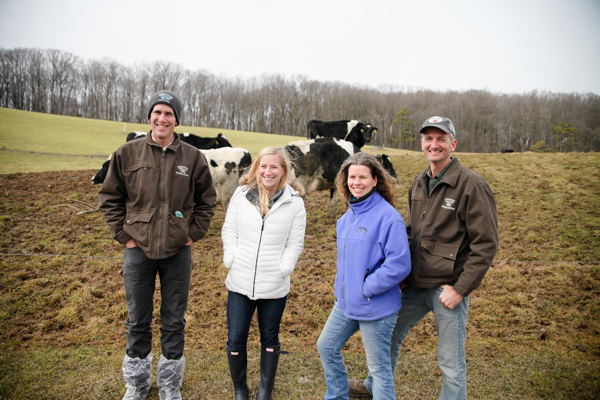
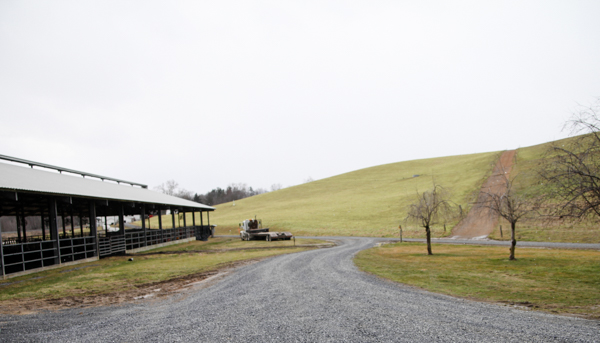
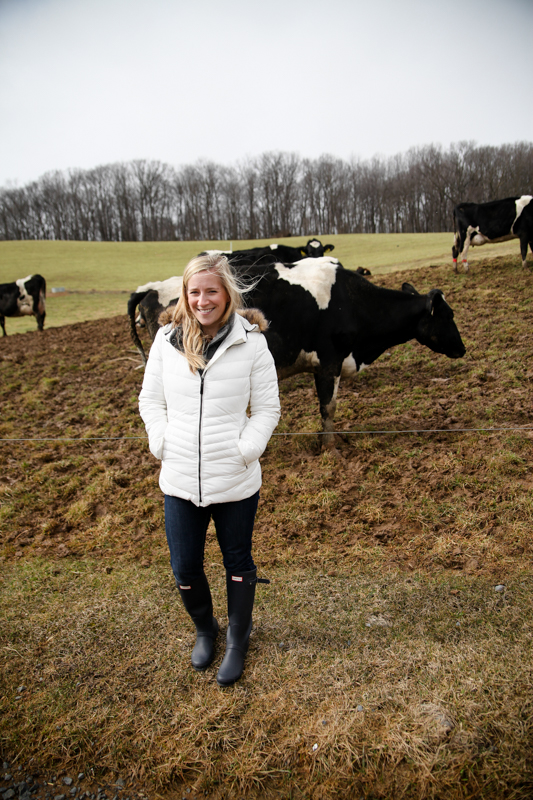

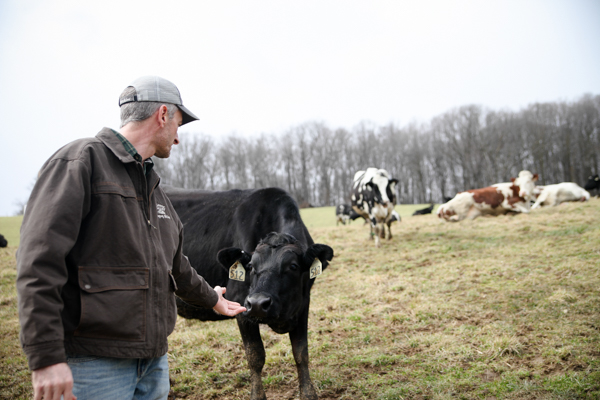
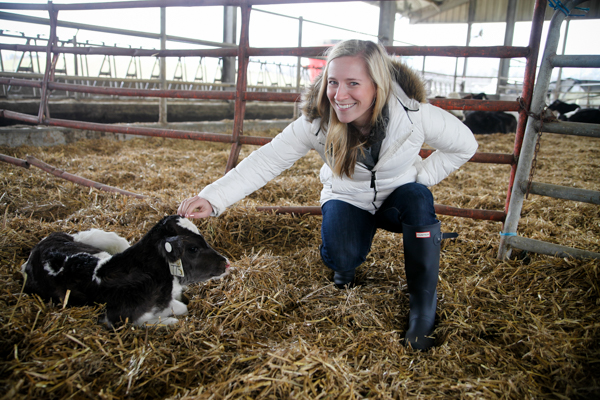
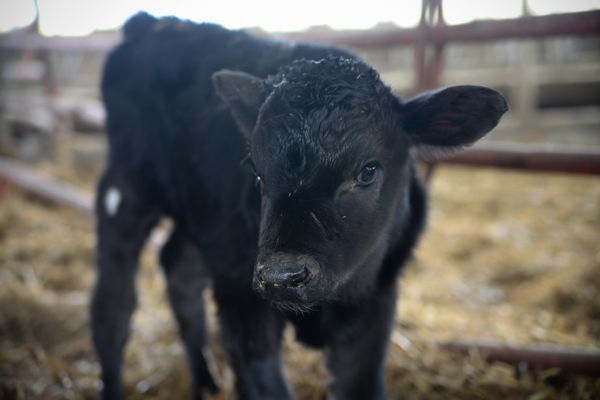
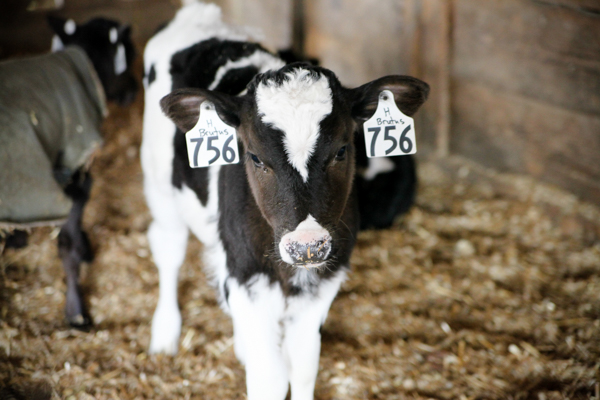
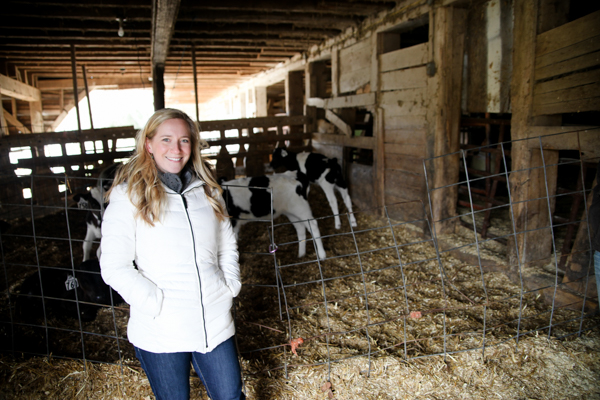
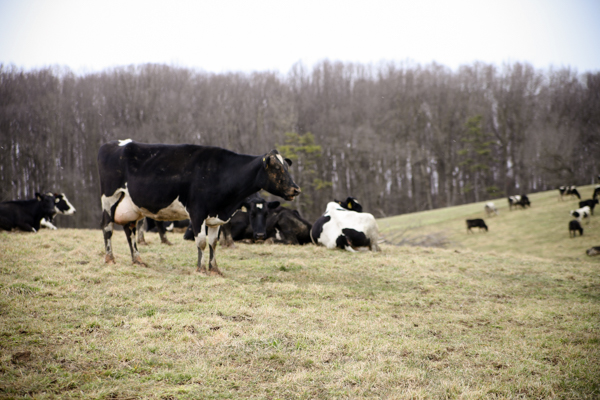
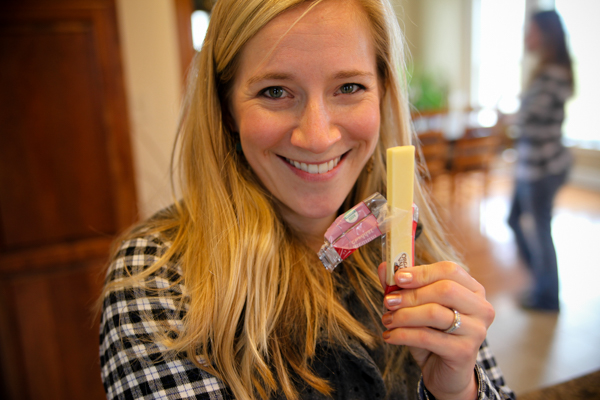

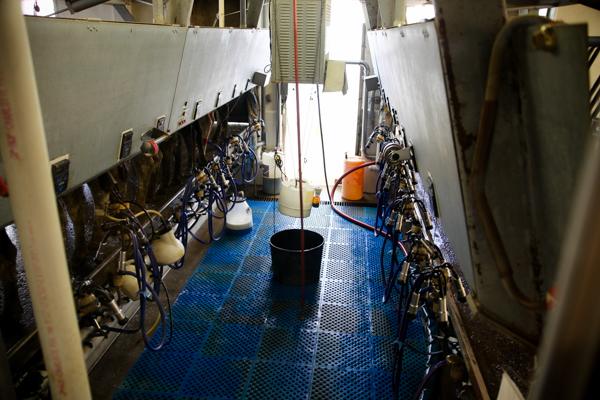
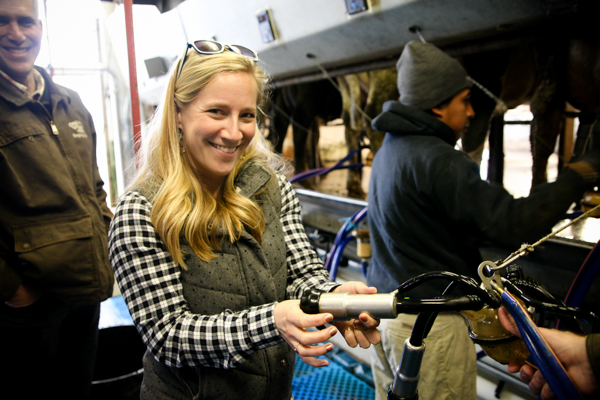
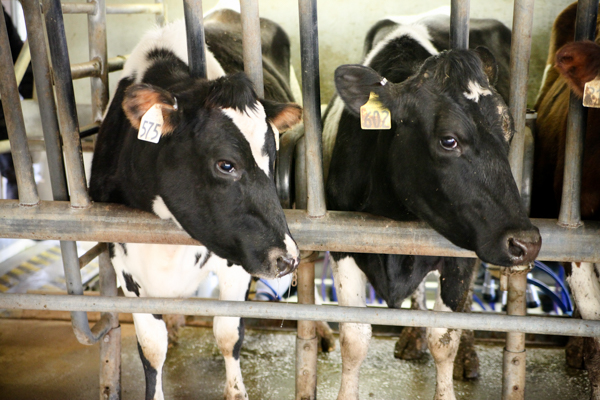

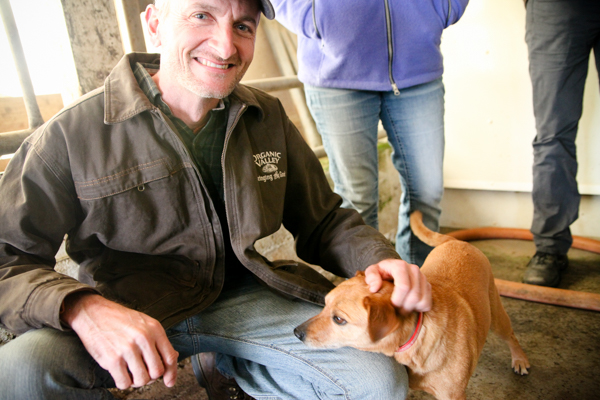

Mary says
How are the baby cows fed? I’m guessing not from mom since they would want to sell that milk.
KathEats says
They drink colostrum from their mothers and then are given bottles of milk that are pumped.
Kate says
How fun! I am a dairy lover so I really appreciate the farmers who put a lot of heart into their work. I have a friend who has a dairy farm and they love & name all their cows. It’s sweet.
Megan B. says
Very cool. I do have a question: what do they do with all the calves that are born on the farm? I assume they don’t all stay there and become dairy cows. ????
KathEats says
Many of them stay there, but the males are sold to other farms when they are older.
Heather says
when the cow no longer produces milk what do they do with her?
KathEats says
I am not sure on that one.
Jennifer says
I think I may have an answer on that one 🙂 Kath, thank you so much for sharing this experience! I found it very informative. As a grown adult I try to keep dairy at 2-3 times a week, but my understanding is that dairy is definitely critical for many people and growing kids. So I love to see humane and kind farming to deliver the product.
Berty says
Hi Kath, looks like you had a nice visit! One of my issues with small organic dairy farms is that they can’t keep all of the calves that are born on their farms. Often they’re sent to non-organic dairies with less humane procedures (females) or veal factory farms (males), which are certainly not friendly places to live.
Do you know what happens to baby cows that do not stay at Grazeland?
KathEats says
I believe some of the females and most (all?) of the males are sold. I hope to humane places too.
Crystal says
Would Organic Valley tell you where they were sold if you asked? I’d be interested to know too. Great post! I often buy Organic Valley so it is nice to see where my milk might be coming from.
Ali says
We are about 10 minutes away from an Organic Valley farm, and surrounded by plenty of other organic and non diaries. It is so fun to visit. Our area has an annual county Farm Tour September that highlights and opens up a wide variety of different farmers. Its a great opportunity to be reminded of the awesome place we live in (NW WA).
Lacey says
I live in Bellingham and go on the farm tour every year – it’s so fun!
Jen says
Oh wow – look at all that pasture for those cows to graze on! The cows look so happy. I understand mastitis to be a common problem on dairy farms. How are cows with mastitis treated on an organic farm?
KathEats says
I didn’t ask but know they had access to health care on the farm
Erin @ Her Heartland Soul says
I love Milk!
Sophie says
What a fun day! The baby cows are so cute! Be careful about loving on that fire too much, because, you know that prank that boys are always pulling really is true, LOL!
KathEats says
Wait what prank!?!
Sophie says
LOL! #nerdalert Well, you know how the human body produces gases. If there’s a flame nearby when you, um, toot, it catches fire!
KathEats says
Hahaha
Cindy DuBose says
Hi Kath, I love your white coat? Where did you get it?
Thanks!
KathEats says
Stitch Fix!!
Siobhan says
You need welly socks! Love my hunter boots but without them my feet are always frozen.
KathEats says
I do!!
Liz says
Hi Kath- I grew up on a dairy farm much like this one so felt right at home reading your post. I’m glad you enjoyed your visit!
Christie says
Kath,
I also grew up on a dairy farm and really enjoyed this post. Farmers are the key to a healthy, sustainable world and I appreciate that you support your local farmers. Also, I believe consumption of dairy products are part of a balanced diet and love that you are willing to share this adventure!
Liz B says
So off topic.. but do you mind sharing what brand your lovely coat is? I adore it! (and those adorable baby cows)
KathEats says
It’s Marc New York by Stitch Fix
Amanda says
This was a really interesting post. What a cool experience!
Susan says
Very impressive! How nice you were able to visit and thanks for sharing. It’s nice to know there are farms like this where the promote good products and treat their animals kind!